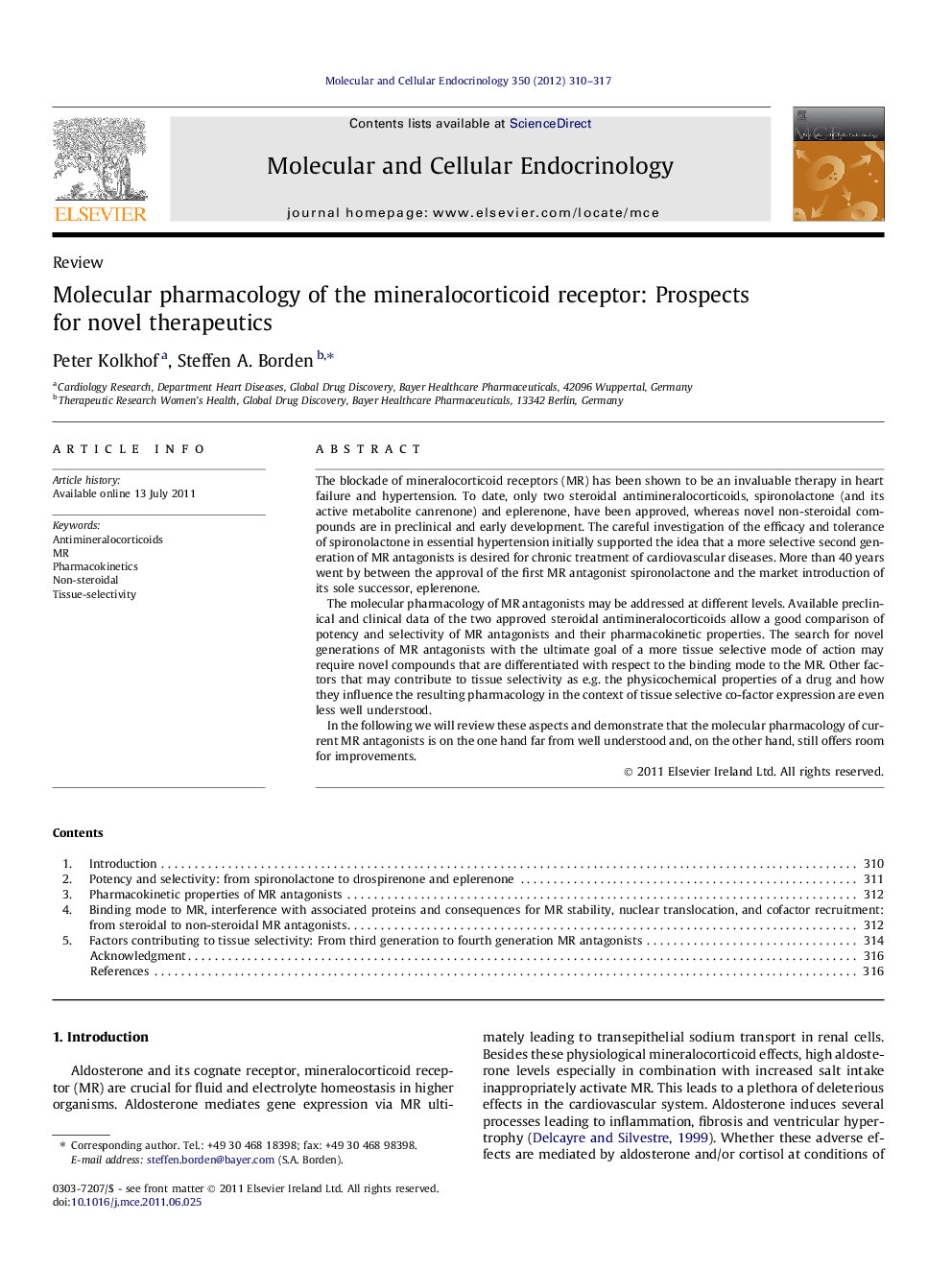| Article ID | Journal | Published Year | Pages | File Type |
|---|---|---|---|---|
| 2196394 | Molecular and Cellular Endocrinology | 2012 | 8 Pages |
The blockade of mineralocorticoid receptors (MR) has been shown to be an invaluable therapy in heart failure and hypertension. To date, only two steroidal antimineralocorticoids, spironolactone (and its active metabolite canrenone) and eplerenone, have been approved, whereas novel non-steroidal compounds are in preclinical and early development. The careful investigation of the efficacy and tolerance of spironolactone in essential hypertension initially supported the idea that a more selective second generation of MR antagonists is desired for chronic treatment of cardiovascular diseases. More than 40 years went by between the approval of the first MR antagonist spironolactone and the market introduction of its sole successor, eplerenone.The molecular pharmacology of MR antagonists may be addressed at different levels. Available preclinical and clinical data of the two approved steroidal antimineralocorticoids allow a good comparison of potency and selectivity of MR antagonists and their pharmacokinetic properties. The search for novel generations of MR antagonists with the ultimate goal of a more tissue selective mode of action may require novel compounds that are differentiated with respect to the binding mode to the MR. Other factors that may contribute to tissue selectivity as e.g. the physicochemical properties of a drug and how they influence the resulting pharmacology in the context of tissue selective co-factor expression are even less well understood.In the following we will review these aspects and demonstrate that the molecular pharmacology of current MR antagonists is on the one hand far from well understood and, on the other hand, still offers room for improvements.
► Novel, non-steroidal MR Antagonists have been discovered. ► Differentiation factors are pharmacokinetic properties and receptor binding modes. ► Physicochemical properties and drug uptake may modulate tissue selectivity. ► Two novel MR antagonists are in early clinical development, one of them in Phase II.
